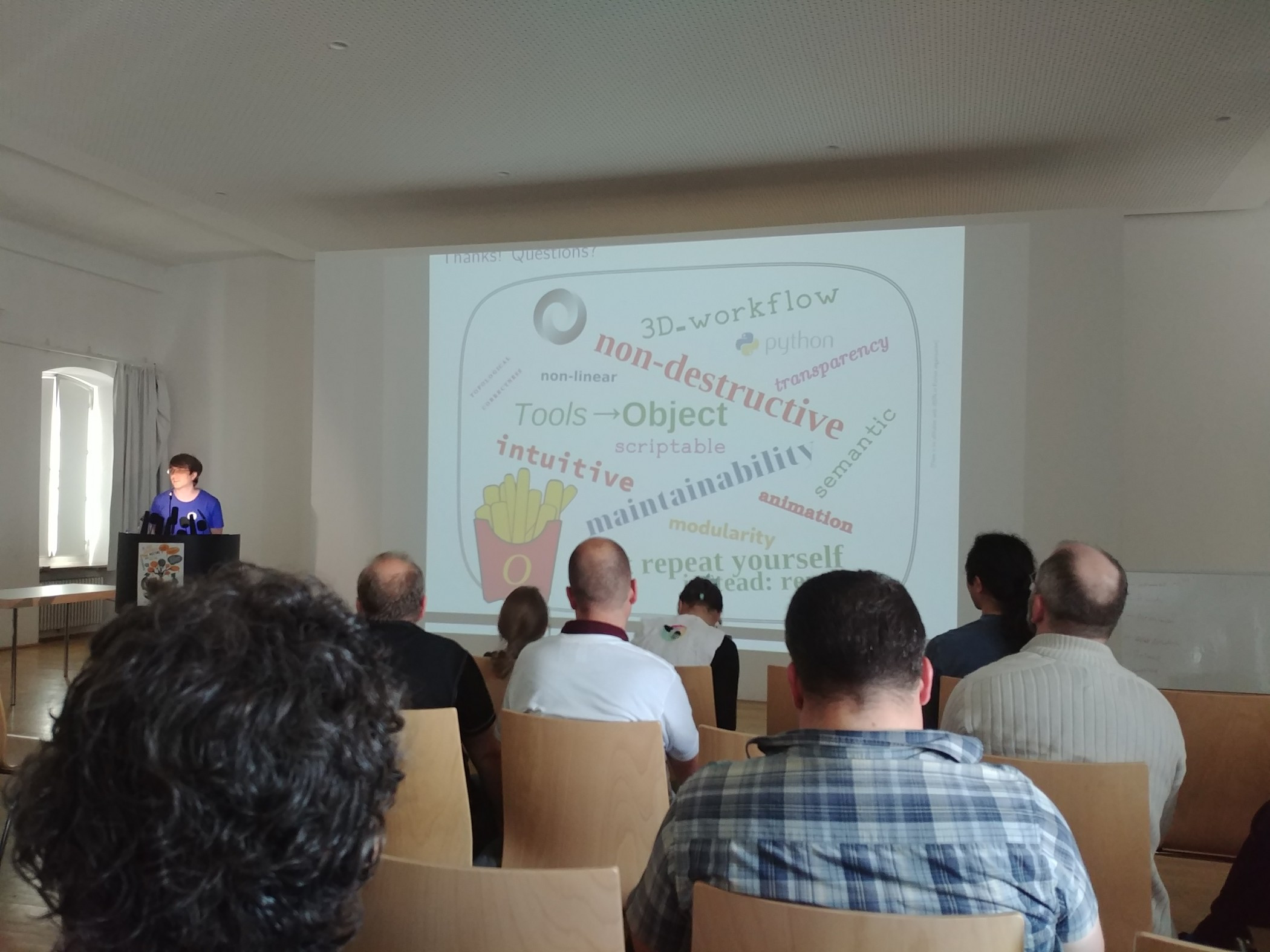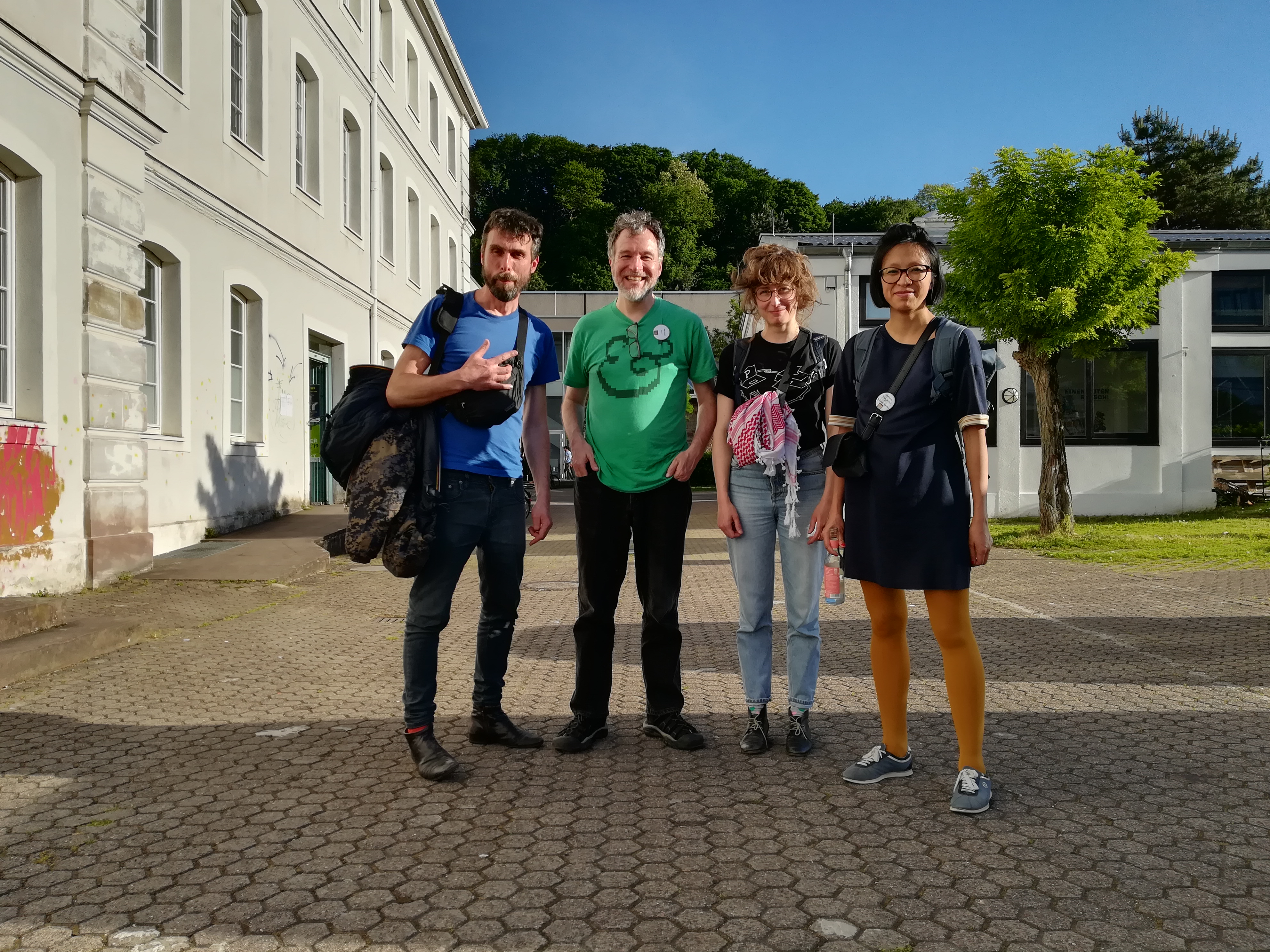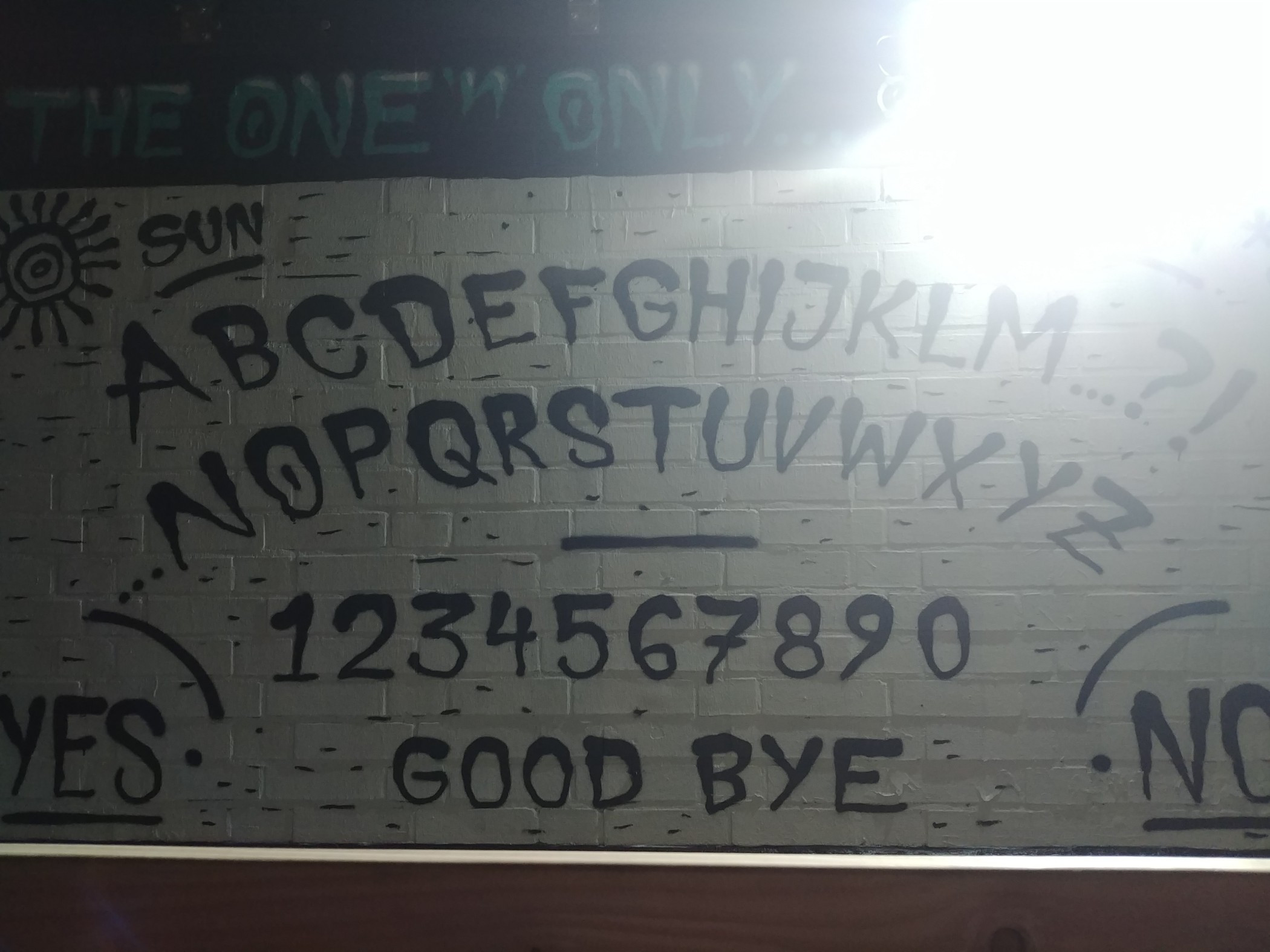Report written by our friend Manetta Berends from Varia
It was a last minute decision to join this year’s LGM. Until the very last moment we weren’t sure if we could make it. In the end Stéphanie, Ludi, Pierre and I (Manetta) joined on the Friday and followed most of Saturday’s programme. We borrowed a car from a friend (thanks Nicolas for the car!), had a last glass in a Supra Brussels café, went one-more-time to the toilet and zoefff, off we were, on the road to Saarbrücken, following the Belgium, French and German highways south/eastwards to this year’s LGM.

This edition presented a range of incisive questions around F/LOSS practices, regarding their vocabularies, (political) values and the need for advocacy or arguments to introduce F/LOSS practices in other environments. Different presentations, workshops and conversations touched upon these questions, such as Manufactura Independente’s thoughts about terminology, Livio Fania’s five profiles of users and their concerns, Larisa Blazic’s workshop around Bauhaus and Libre Graphics, Eylul Dogruel’s presentation on the open source tools that she uses in her photography classes, or the multiple strategies to introduce F/LOSS to students that were discussed during the 80column educators gathering initiated by ginger coons and Larisa Blazic. Notes of that conversation can be found here: https://pad.vvvvvvaria.org/lgm-floss-educator-bof.
It was cool to see these questions appear throughout the programme, next to the always wide range of presentations of tools, technical details and various practices.
Manufactura Independente, which is the name of the design studio of Ana Isabel Carvalho and Ricardo Lafuente, presented different vocabularies used by graphic designers using or working on F/LOSS. Their remarks specifically concerned the ideologies and connotations of the terms open design and open source design. In the case of open design, they stated how the word open is a very ambiguous term, leaving too much space to be misunderstood as freedom in the sense of individual liberty or free in the sense of gratis products. Using the term open source design is in their view a more precise way to describe a practice, as it particulary points to a field of software development. It is a term that is for example used by the Open Source Design initiative, which aims to connect designers to open source software projects. However, Ana and Ricardo openly questioned how useful the term still is, in case the design work for an open source project is produced with proprietary software. Apparently this was the case in the example of Ubuntu, where its design department worked on Mac OS using the Adobe Suite. This way of contributing to a software project is not sufficient in the eyes of Ana and Ricardo, who see the use of F/LOSS in a daily design practice as the most vigorous type of contribution to a larger ecosystem. Which is a very fair point! I read the presentation of Ana and Ricardo mostly as a trigger for further conversations, to unravel the multiplex of nuances and ideologies that are at play within the F/LOSS design field and to call for a need of precision when choosing words. Also for Manufactura Independente the question of what term to use to describe their practice is still an unresolved one. They left the audience with two (explicitly questionmarked) proposals that they currently consider to use: libre design and F/LOSS design.
After a first day of this year’s LGM, which was the Friday in our case, Pierre happily noted how the vector had received already quite a bit of attention. And indeed, it is not often the case that the curvy, bendable drawing instrument wins it from the always at hand bitmap tools during an LGM. Raph Levien presented a new spline as an additional type of curve next to the Bezier, Hobby or Spiro curves; Pascal Bies presented the vector drawing tool ommpfritt that makes it possible to draw vectors in an object-oriented way, Ricardo Lafuente and Stuart Axon presented the Python drawing library Shoebot which supports exporting to SVG.

And Pierre himself shared a workflow to make a multipage color-separated publication in Inkscape, featuring illustrations made with Raph Levien’s Spiro curve. The metaphorical loop crossed its own curve! And in line of all these control-pointed shapes, Stéphanie, Quentin and I took a moment to present this year’s ideas behind the (now ongoing) Relearn curve.

It was great to be introduced to Raph Levien’s long tail of research and many years of contributions to vector drawing tools. During this LGM he presented a follow up on the playful and stubborn spiro curve: a yet-to-be-named new spline, which is another word for the algorithm and math behind the bending of a curve. This new spline will be less expressive and easier to learn (compared to the famous bezier curve) and less “wild” (compared to the spiro curve). An HTML demo of this new spline can be found online at https://spline.technology/demo/. More material, including a first research paper, can be found at https://github.com/raphlinus/spline-research. We can’t wait to give this spline a try!

The last hours of our LGM were filled with a workshop on Paged.js, a browser-based layout rendering tool to make and preview paged media in a web environment. Workshop host Julie Blanc described how Paged.js is built as a polyfill, which is a software strategy to use CSS standards from W3C which are not implemented yet in either old browsers or current browsers. The idea of Paged.js as a polyfill is to extend the paged media functionalities of a browser and fill the gaps of missing support when needed. Julie showed us how you can easily insert running headers with chapter titles in your pages, how to generate a table of content with page numbers, or how to define varying layouts for different sections or elements of a book. Although we were curious to hear about support for the option to work with multiple threads in one document, we were also quite impressed by the promising robustness of the tool.
It was a sweet trip with sweet people and a good occasion to see familiar faces again while meeting some new ones as well. Many thanks go to the local organizers of this edition (thank you!) and the international organizing team (thanks!).
